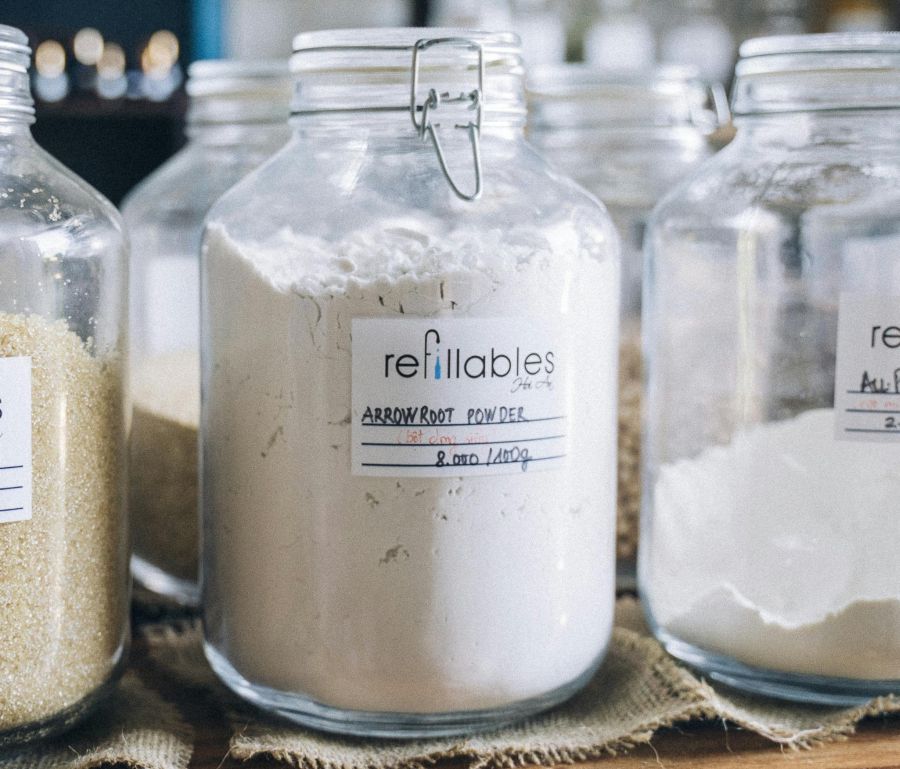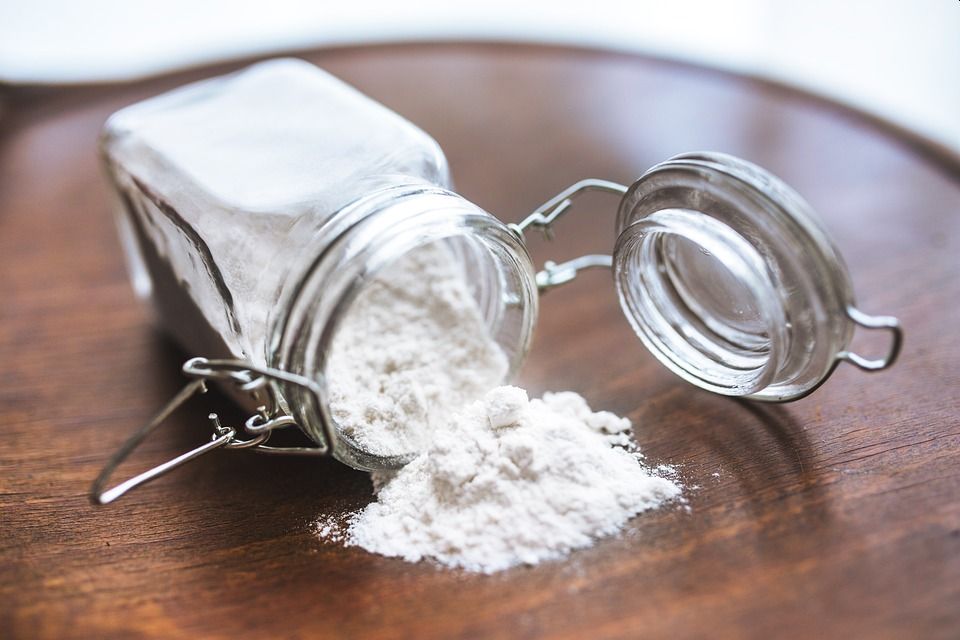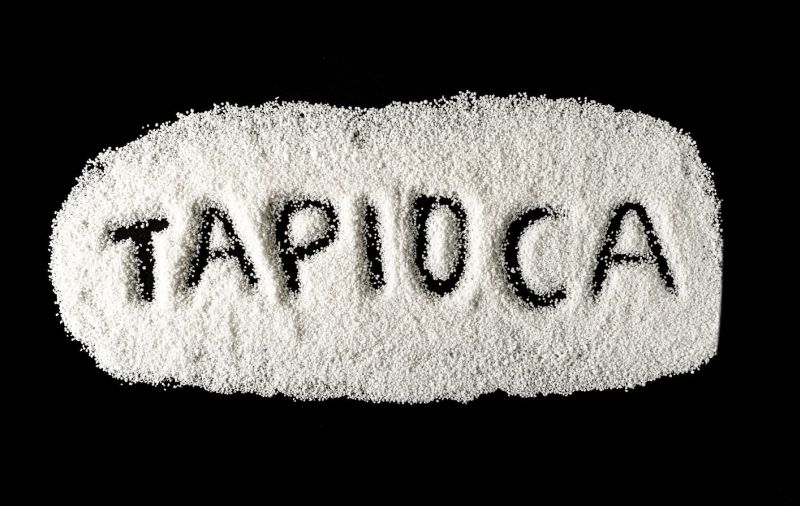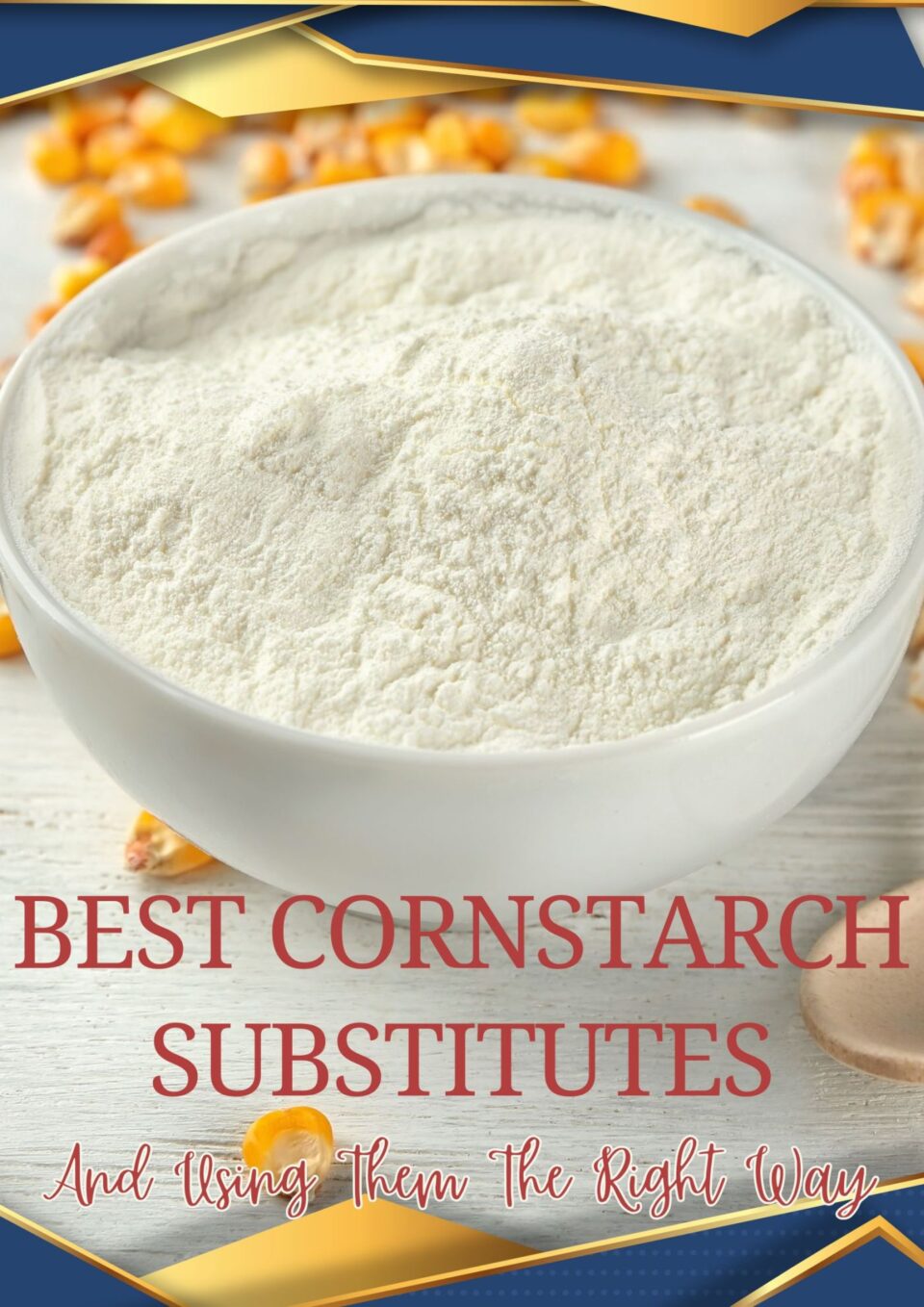There’s some serious business brewing when there’s a need for a cornstarch substitute. After all, cornstarch is the most popular and easily available starch. It’s also versatile enough for a whole array of uses from plain thickening of sauces to breading ingredients while frying.
Useful as cornstarch is, it’s not without limitations. Besides, there are applications where other starches can outshine it. As such, sometimes an alternative or substitute might indeed be the way to go.
This ingredient is known by a few names around the world, including cornstarch, cornflour, maize starch, and corn starch. Especially in the UK and some commonwealth countries, the word cornflour represents corn starch, which is distinct from corn flour – a flour obtained from dried corn kernels.
Generally speaking, common cornstarch substitutes include other starches (potato starch, tapioca starch, arrowroot starch, wheat starch), some flours (rice flour, wheat flour), and other ingredients like guar gum and roux.
Bear in mind, these alternatives and substitutes often have characteristics of their own that need to be considered. I’ll discuss those, while also adding more details on these substitutes as we go further into the article.
Table of Contents
Top Substitutes For Cornstarch – Understanding The Substitution And Uses
1. Arrowroot Starch

Arrowroot starch, also called arrowroot flour, is the closest substitute to cornstarch. It behaves similarly to cornstarch and offers similar use and consistency. Even its gelation temperature is similar to cornstarch.
Plus, arrowroot starch can handle acidic ingredients, handles freezing better, and it has a clean finish as compared to the cloudy touch of cornstarch. These properties can be useful for several recipes and in many cases, superior to what cornstarch offers.
On the downside, arrowroot starch should not be used with recipes that contain milk, as the combination can create a very unpalatable texture.
The key is to not heat arrowroot starch too far from its gelation temperature of 147°F. It can work pretty well for most baking applications though.
When substituting arrowroot starch for cornstarch, following a 1:1 ratio of equal substitution can work.
2. Wheat Starch
Here’s another popular cereal grain starch that matches very well with cornstarch/cornflour. Wheat starch is almost as competent as its more popular cousin, cornstarch, though not as easily available. However, if you need a substitute for cornstarch, wheat starch will fit the role just as well.
Wheat starch is derived from wheat and is not the same as wheat flour, though the two have similarities in origin and appearance.
Wheat starch can be used pretty much like cornstarch for most applications. The substitution ratio of 1:1 (equal parts) should work just fine.
3. All Purpose Flour

Using a conventional flour like all purpose flour can be a good choice as a cornstarch substitute for uses like thickening sauces or breading ingredients for frying.
The advantage of using flour for thickening sauces is that the result is a lot more heat stable and can handle prolonged cooking or exposure to heat with relative ease. Plus, it handles reheating better and maintains its structure.
Of course, there are downsides too, with flour adding a stronger flavor of its own to the recipe and making the recipe appear more cloudy. Even though cornstarch is slightly cloudy, it still offers a much cleaner and shinier finish for recipes as compared to all purpose flour.
Yet, there are preferences at play for a substitution, and where necessary, this change can work just fine. Of course, do keep in mind that cornstarch is gluten-free, while all purpose flour contains gluten.
4. Rice Flour
Naturally gluten-free and sporting a relatively milder flavor, rice flour can be a suitable cornstarch substitute for thickening sauces and gravies. However, its use will bring some color and make the sauce appear a bit more cloudy.
Flours like rice flour and wheat flour (including all purpose flour) are rich in starches, but they do include other components (and nutrients) as well. On the other hand, commercial starch products like cornstarch are almost entirely starch with little to no room for other components.
As such, some changes like color and flavor are likely to happen when you substitute a flour in place of a starch.
Yet, rice flour is quite mild and can work as a convenient replacement for cornstarch.
5. Tapioca Starch

Tapioca starch is a very competent choice as a simple to use and effective starch. There is no need to form a slurry with this starch and it can go into action by simply sprinkling it on the food. That’s a big reason why tapioca can work as a last-minute starch and make course-correction for a recipe easier.
That said, tapioca still needs to reach its gelation temperature of around 153–158°F for it to work properly. The convenience factor is that you don’t need to add a slurry or cook it for proper use.
This is a clear starch and can give a bit of a shimmer to the recipe, often making the finished product look quite amazing. That’s why it’s absolutely phenomenal with desserts and puddings. Some commercial juice products use this too for a more appealing look.
The stringy consistency of tapioca is different from cornstarch, but it’s not that big of a problem. Additionally, tapioca starch cannot handle heat for a long time, so prolonged cooking is not possible with this starch.
However, where thickening sauces, soups, and stews are concerned, just sprinkling some of this starch and mixing it thoroughly at the end of the recipe can go a long way. Even though tapioca can provide more thickness to the recipe compared to cornstarch, the substitution amount for tapioca is usually more as compared to cornstarch.
A conventional substitution can proceed in a 2:1 ratio, which means using two spoons of tapioca starch where a recipe calls for one spoon of cornstarch.
6. Potato Starch
Another starch derived from tubers, potato starch is both popular and effective. Much like tapioca starch, it can work as a last-minute course-correction option for recipes, where the culinary need is to thicken soups or stews.
Potato starch is also remarkably useful for baking and can handle being used with desserts or foods that need to stay refrigerated/at a low temperature. On the downside, it cannot handle high heat culinary applications where prolonged exposure to heat is necessary.
In some cases, it might be possible to use potato flour in place of potato starch. While potato flour and potato starch are terms sometimes used interchangeably there can be a difference. Conventional potato flour is made from cooked and dehydrated potatoes – much like potato flakes. Potato starch, on the other hand, is a starch derived from potatoes.
Coming back to our discussion, potato starch has a more neutral flavor as compared to cornstarch, and delivers a clear, somewhat shiny finish to the recipe. It has a stringy consistency but that is usually not a problem for most recipes.
For most recipes, potato starch can replace cornstarch in an equal (1:1) ratio.
7. Guar Gum
Technically, guar gum is a fiber, not a starch. Yet, where things come down to thickening sauces or delivering an amazing texture for food, this gum is the boss. Plus, it’s far more effective than cornstarch (or any other starch for that matter) at absorbing water and can deliver surprisingly good results.
It doesn’t need to be heated for a gelation temperature, so it can work at any temperature point for a recipe. Its effectiveness makes this gum pretty popular for various food applications and diet preferences, including gluten-free and vegan baking or cooking recipes. Guar gum can work as a remarkable emulsifier too and often delivers texture and finish that even outshine eggs.
Though I’ve used its importance in vegan recipes as an example, guar gum is pretty much used in all aspects of the culinary world.
However, when substituting cornstarch with guar gum, it’s important to keep the unique characteristics of guar gum in mind. For most situations, use only ⅛ (one-eighth) of guar gum as compared to cornstarch. As an example, if a recipe asks for two spoons of cornstarch, use only a ¼ spoon (quarter spoon) of guar gum.
When correctly used, guar gum is amazing for texture. However, overusing it can give recipes a weird, stringy texture – and since guar gum works with small quantities, it’s almost too easy to go overboard. So, it’s important to be careful when using this food ingredient.
8. Roux
The classic, old-fashioned roux (or even a Beurre Manié) is still a great way to thicken sauces and stews while giving them a nice sheen and finish. And for that specific purpose, it can work as a remarkably good cornstarch substitute.
There are obvious considerations for such a change, though. A roux is prepared with fat like butter or oils. This can’t really be a good choice for those who’re calorie counting. Besides, while cornstarch thickens a soup, it also keeps it light, rather than the heavier style of a roux.
In any case, roux can deliver a delicious result for your recipe when used as a thickener. Just, be sure you’re making an informed choice when taking this route for substitution.
Picking The Right Cornstarch Substitute
Cornstarch or cornflour is a versatile ingredient but there are times where a substitution is desirable. Our list here offers several choices that could make this process easier, providing information and methods that make it easier to pick a substitute for cornstarch. Some care is necessary, but a conventional substitution should be possible without much problem.

